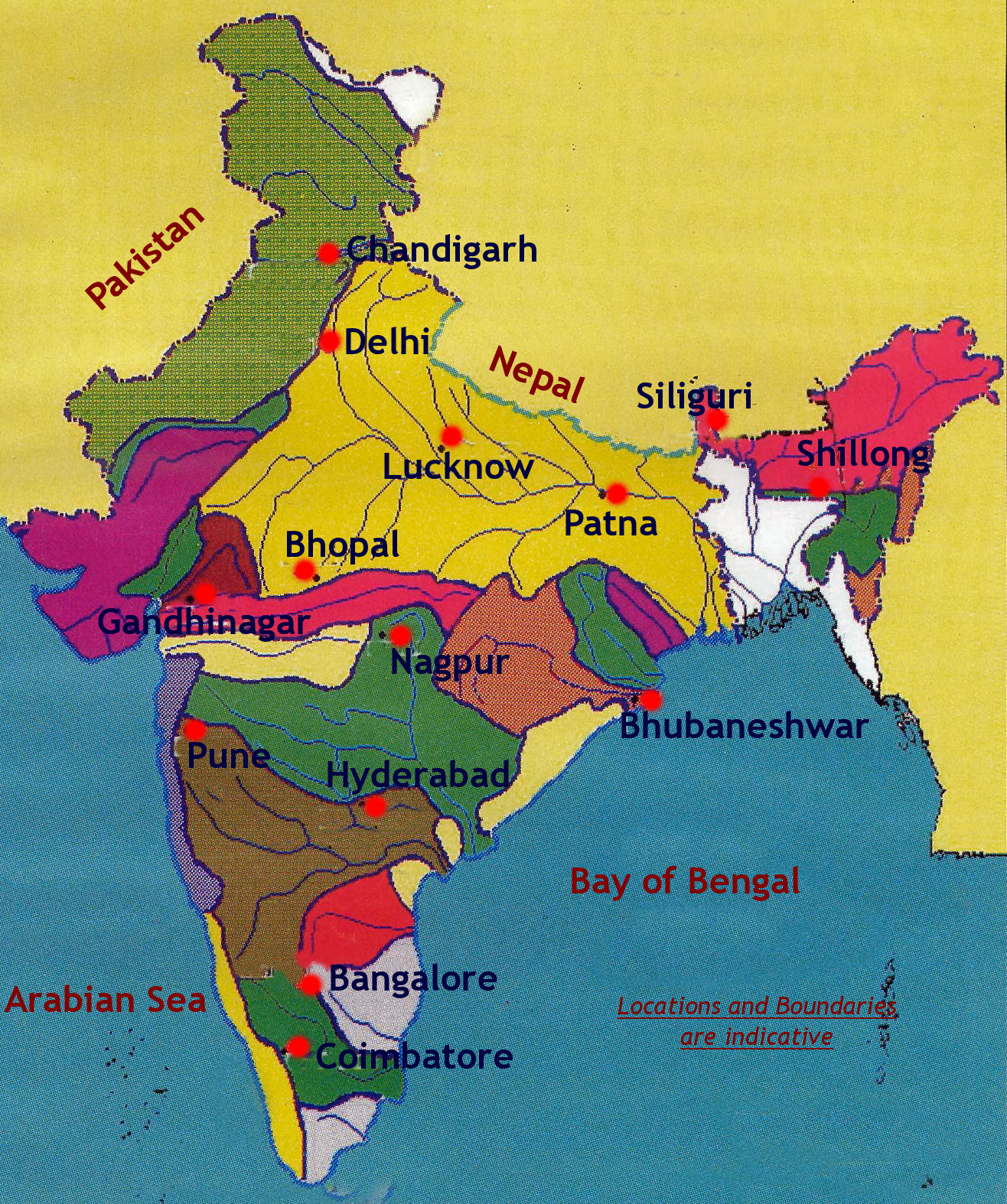About Basins
The river Yamuna, a major tributary of river Ganges, originates from the Yamunotri glacier near Banderpoonch peaks in the Mussourie range of the lower Himalayas at an elevation of about 6387 meters above mean sea level in district Uttarkashi (Uttarakhand). In its first 170 km stretch, the tributaries Rishi Ganga Kunta, Hanuman Ganga, Tons and Giri join the main river.
Arising from the source, river Yamuna flows through a series of valleys for about 200 Kms, in lower Himalayas and emerges into Indo-Gangetic plains. In the upper reaches, the main valley is overlooked by numerous hanging valleys, carved by glaciers during the last ice ages. The gradient of the river is steep here and the entire geomorphology of the valley has been influenced by the passage of the river. In the upper stretch of 200 Km, it draws water from several major streams.
The combined stream flows through the Shivalik range of hills of Himachal Pradesh and Uttarakhand states of India and enters into plains at Dak Pathar in Uttarakhand where the river water is regulated through weir and diverted into canal for power generation. From Dak Pathar it flows through the famous Sikh religious place of Poanta Sahib. On the right side of the Yamuna basin is the Mussourie spur-along which, lies sprawled, the hill station of Mussourie. Flowing through Poanta Sahib it reaches Hathnikund/Tajewala in Yamuna Nagar district of Haryana state, where the river water is again diverted into Western Yamuna canal and Eastern Yamuna canal for irrigation. During dry season, no water is allowed to flow in the river downstream to Tajewala barrage and the river remains dry in some stretches between Tajewala & Delhi. The river regains water because of ground water accrual and contributions of feeding canal through Somnadi (seasonal stream) upstream of Kalanaur. It enters Delhi near Palla village after traversing a route of about 224 Km.
Distinguished Independent Segments of River Yamuna
| Segment | Distance | KM |
|---|---|---|
| Himalayan Segment | From origin to Tajewala Barrage | (172 kms) |
| Upper Segment | Tajewala Barrage to Wazirabad Barrage | (224 kms) |
| Delhi Segment | Wazirabad Barrage to Okhla Barrage | (22 kms) |
| Eutriphicated Segment | Okhla Barrage to Chambal Confluence | (490 kms) |
| Diluted Segment | Chambal Confluence to Ganga Confluence | (468 kms) |
The river is again tapped at Wazirabad through a barrage for drinking water supply to Delhi. Generally, no water is allowed to flow beyond Wazirabad barrage in dry season, as the available water is not adequate to fulfill the demand of water supply of Delhi.
Whatever water flows in the downstream of Wazirabad barrage is the untreated or partially treated domestic and industrial wastewater contributed through several drains along with the water transported by Haryana Irrigation Department from Western Yamuna Canal (WYC) to Agra Canal via Nazafgarh Drain and the Yamuna. After 22 Km downstream of Wazirabad barrage there is another barrage, Okhla barrage, through which Yamuna water is diverted into Agra Canal for irrigation. No water is allowed to flow through barrage during dry season. Whatever water flows in the river beyond Okhla barrage is contributed through domestic and industrial wastewater generated from East Delhi, Noida and Sahibabad and joins the river through Shahdara drain. The Yamuna after receiving water through other important tributaries joins the river Ganga and the underground Saraswati at Prayag (Allahabad) after traversing about 950 Km. Thus, Yamuna river cannot be designated as continuous river particularly in dry seasons (almost 9 months), but can be segmented in five distinguished independent segments due to characteristic hydrological and ecological conditions.
The catchment of Yamuna river system covers parts of Uttar Pradesh, Uttarakhand, Himachal Pradesh, Haryana, Rajasthan, Madhya Pradesh & Delhi states.
The catchment of River Yamuna
| Name of State | Total Catchment Area in Yamuna (in Sq. Km.) | %age contribution |
|---|---|---|
| UP (including Uttarakhand) | 74208 | 21.5 |
| Himachal Pradesh | 5799 | 1.6 |
| Haryana | 21265 | 6.5 |
| Rajasthan | 102883 | 29.8 |
| Madhya Pradesh | 14028 | 40.6 |
| Delhi | 1485 | 0.4 |
The tributaries contribute 70.9% of catchment area and balance 29.1% accounted for direct drainage into the Yamuna river or to the smaller tributaries. On the basis of area, the catchment basin of Yamuna amounts to 40.2% of the Ganga Basin and 10.7% of the total land mass of the country.
 भारत सरकार
भारत सरकार 










